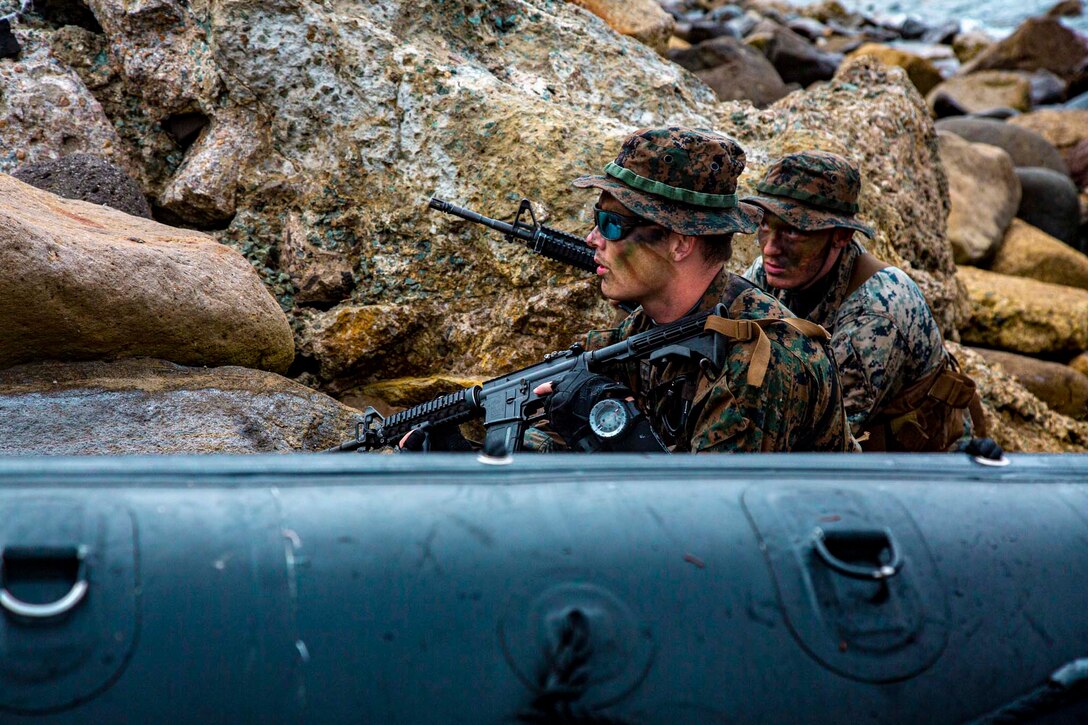
Marine Corps Cpl. John Fudge, left, and Lance Cpl. John Clutter provide security for a simulated small boat raid during training at San Clemente Island, Calif., Aug. 4, 2020.
Providing up-to-date information, news and original content on American Military issues.

Marine Corps Cpl. John Fudge, left, and Lance Cpl. John Clutter provide security for a simulated small boat raid during training at San Clemente Island, Calif., Aug. 4, 2020.
Soldiers engage simulated enemy forces during a decisive action rotation at Fort Irwin, Calif., Sep. 13, 2020. The rotations are designed to ensure Army brigade combat teams remain versatile, responsive and ready.
Navy Capt. Lloyd B. Mack, center, commanding officer of Naval Air Facility Atsugi, conducts a last walk through of Shirley Lanham Elementary School during a ceremony held in honor of him and his family at Naval Air Facility Atsugi, Japan, Sept. 15, 2020. Mack is scheduled to turn over his commanding officer duties to Navy Capt. John M. Montagnet. The facility is currently taking COVID-19 safety precautions to safeguard its service members and families on base.
Air Force Senior Airman Jonathan Egboiyi cuts fallen trees at Hurlburt Field, Fla., Sept. 18, 2020. Airmen cleared fallen trees and debris caused by Hurricane Sally.

Four U.S. F-16 fighting falcons fly in formation with two Canadian CF-188 Hornets over the skies of Labrador, Canada, Sept. 20, 2020. The aircraft participated in a North American Aerospace Defense Command Arctic Air Defense Operation.
Navy Petty Officer 2nd Class Muhammed Parks signals to an MH-60S Seahawk helicopter during flight operations aboard the littoral combat ship USS Detroit in the Caribbean Sea, Sept. 12, 2020.
Sept. 21, 2020 | BY Jim Garamone , DOD News
The NATO chiefs of defense met virtually for the alliance's Military Committee meeting last week.
Under the leadership of Air Chief Marshal Sir Stuart Peach, the chairman of the committee, the chiefs discussed ongoing operations in a time of COVID-19 as well as future moves growing out of the alliance's new strategy. Army Gen. Mark A. Milley, the chairman of the Joint Chiefs of Staff, attended for the United States.
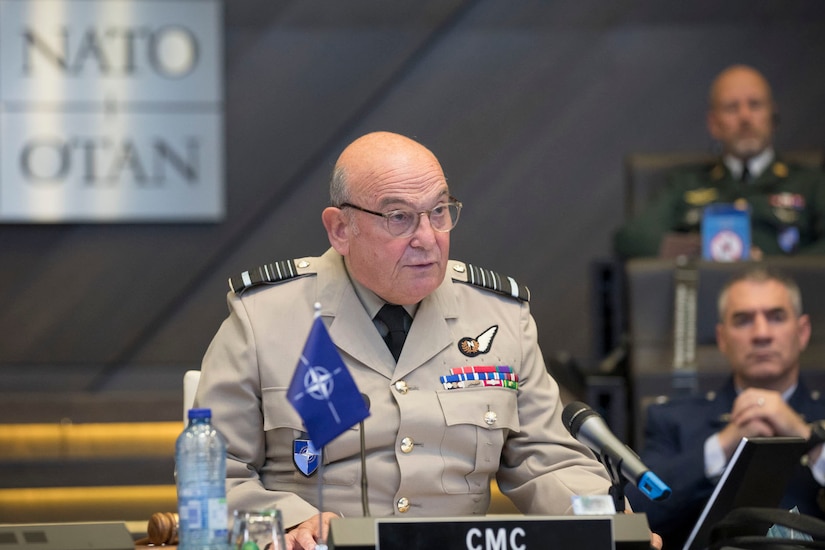
The meeting was to be in Rome, but the coronavirus has stopped travel.
Peach said he has been struck by the "fortitude and community spirit that has emerged" because of the pandemic. "In times of trouble, people have come together, focusing on what unites them and not what separates them, to help those in need," he said.
NATO as an organization has helped the allies in this time of need by ensuring crucial capabilities are where medical experts need them and by ensuring that the right equipment gets in the right hands.
Alliance service members are also carrying on their mission of deterrence and stability, Peach said.
"Speaking virtually to the 30 allied chiefs of defense today, I was encouraged by their interaction — the coming together of friends, colleagues, all united in their effort to provide the best possible military advice for NATO," he said.
The chiefs shared best practices for the pandemic, identified lessons, pooled resources and assisted one another through the Euro-Atlantic Disaster Response Coordination Center.
The need for deterrence and stability remains as "state and non-state actors have kept up their efforts to manipulate, disrupt, deny and exploit in order to achieve their aims," Peach said.

The chiefs focused on what the alliance has achieved, what needs to be done and what resources NATO service members need to accomplish the missions.
The chiefs started by discussing the alliance missions in Afghanistan, Iraq and Kosovo. They also discussed the multinational battlegroups in the east of the alliance, the air policing mission and NATO maritime deployments.
Air Force Gen. Tod D. Wolters, NATO's Supreme Allied Commander Europe, briefed the chiefs on these missions. "Resolute Support Mission in Afghanistan was a key point of discussion with the peace efforts ongoing and the encouraging progress being made," the air chief marshal said. "The chiefs of defense reiterated their continued support for Afghanistan and stressed that the military presence of the alliance and its partners in the Resolute Support Mission in Afghanistan will remain conditions-based."
There are roughly 12,000 NATO troops in Afghanistan supporting the Afghan security forces. "A peaceful and stable Afghanistan is in everybody's interest," he said. "NATO allies and partners will continue to play our part."
The NATO mission in Iraq will continue training Iraqi security forces to build their capacity as a hedge against the resurgence of terrorism in the region.
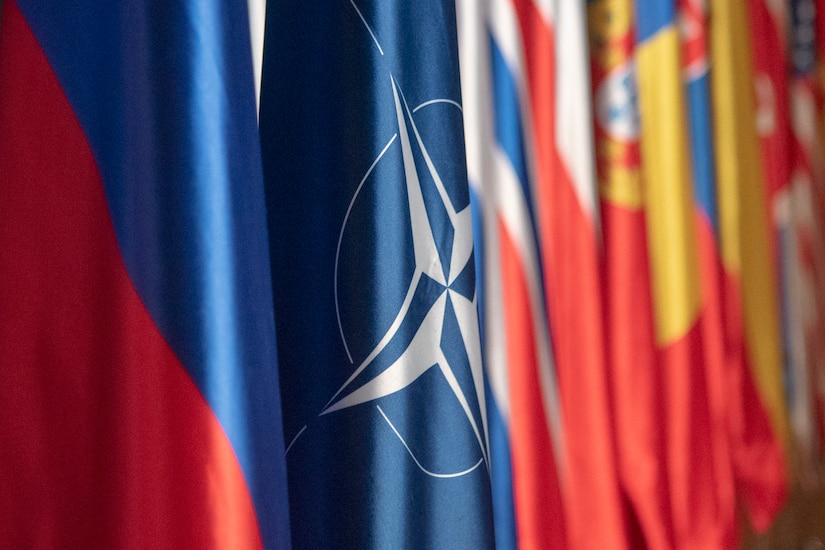
"NATO's Kosovo Force marked its 21st anniversary this year (and) allied (chiefs) confirm their full commitment and that mission remains unchanged," Peach said.
There are about 3,400 troops provided by 27 NATO members and partners in Kosovo. "We regularly assess our KFOR mission and it has been agreed by Allies that we should maintain the current strength," he said.
The chiefs also heard about the precautions taken to protect troops during the pandemic. Peach stated that the operational readiness of NATO forces remains undiminished.
The chiefs also looked at the deterrence and defense of the Euro-Atlantic area and NATO's warfighting capstone concept. These follow from NATO's new military strategy. "The deterrence and defense of the Euro-Atlantic area concept helps set out NATO's military priorities and approach to current and future threats," he said. "NATO's warfighting capstone concept is based on a 20-year view from a warfighting perspective."
Finally, the chiefs discussed Russia. Peach said the alliance's relationship with Russia is complex.
"We have been adversaries, partners and colleagues in countering terrorism, but since the illegal annexation of Crimea in 2014, our relationship has entered a new phase" he said. "There has been a pattern of destabilizing behavior from Russia — including aggressive actions against their neighbors, election interference and cyber-attacks."
Russian propaganda outlets have falsely accused NATO of creating and spreading COVID-19, and Russia has escalated tensions by developing hypersonic weapons. "These systems are clearly a concern for this committee," he said. "We will maintain our deterrence and defense, and we will not mirror Russia's actions."
Sept. 21, 2020 | BY David Vergun , DOD News
Due to the COVID-19 pandemic, a large number of Defense Department personnel have been teleworking and successfully continuing the mission, the DOD's chief management officer said.
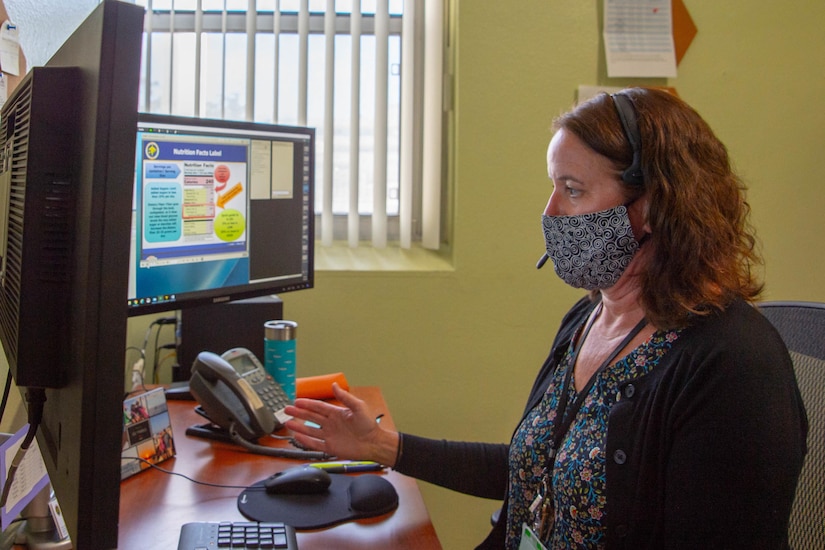
Lisa W. Hershman spoke Wednesday with Troy Schneider, the editor-in-chief of "Federal Computer Week" magazine.
Hershman used the example of the Pentagon to illustrate the department as a whole. She said that when she arrived in April 2018, people in the building said telework for the majority of workers couldn't be done. This was a big change from the company that she ran where the entire company worked remotely on Fridays, she said.
"Believe it or not, Fridays were our most productive days," Hershman added.
"And when I came on board and I said, 'What's your teleworking policy?' They looked at me kind of funny and said, 'We don't do that here,'" she said.
The reason for not teleworking, Hershman said she was told, was because of the large amount of classified work performed in the building.
That was an understandable and reasonable response but then things dramatically changed with the pandemic, she said.

In the early days of the pandemic, the daily average of employees physically working at the Pentagon went from over 24,000 people to 5,300, about a 17 percent occupancy rate, she said. "It felt like a ghost town."
Hershman credited the department's information technologists with securing the necessary equipment and connectivity which enabled the workers to continue the mission.
Transitioning to remote work also has a cultural component, she said. In the department, as in the private sector, there are visionary leaders who want to improve their businesses and are focused on driving change for the better. Then there are others who are maybe a bit more reluctant to do things like working remotely.
Hershman provided some examples of how working remotely has been a driving force of change for the better.

When the department was looking at how it manages medical care, before the pandemic, there was a telemedicine infrastructure in place but it wasn't accessed very regularly. That changed and now it is being utilized more often, she said.
The department looked at a variety of metrics on productivity and found that many personnel were more productive working remotely, she said. "So we called them and said, 'Look, your numbers are phenomenal. What's different?' They said, 'I'm not constantly interrupted by phone calls and people knocking on the door and coming in, and so that's been very helpful.'" She added that for others, elimination of the long commute resulted in time saved and a decrease in fatigue.
Hershman mentioned that while unclassified work could for the most part be done outside the building, classified work still needed to be done inside.

"We've got to make sure that telework is accessible to all," she said. "There are some positions in the federal government that require 100% access to classified systems. So for those [who] do not have as much of that demand for continuous access to special systems or special equipment, supervisors need to consider that when implementing some of their routine remote working opportunities."
The department is now looking at position descriptions, performance metrics, IT system requirements and other factors such as level of security clearances needed for different types of work, in order to make teleworking a more available option, she said.
Sept. 21, 2020
The Department of Defense today announced the award of six (6) grants totaling $25 million under the Defense Manufacturing Community Support Program by the Office of Economic Adjustment. These awards follow a competitive selection process culminating in Under Secretary of Defense for Acquisition and Sustainment Ellen Lord’s designation of six Defense Manufacturing Communities on August 16, 2020, and for the Office of Economic Adjustment to invite grant applications to strengthen the national security innovation base. The awards derive from Fiscal Year 2020 appropriated funding, and leverage an additional $12.6 million in non-Federal funding for a total investment of $37.6 million to enhance critical skills, research and development, and small business support in order to strengthen the national security innovation and manufacturing base.
The grant awards are as follows:
The Defense Manufacturing Community Support Program is authorized by Section 846 of Public Law 115-232, which enabled the Secretary of Defense to establish a program to designate and support consortiums as defense manufacturing communities to strengthen the national security industrial base.
For more information about the Defense Manufacturing Community Support Program, visit https://oea.gov/Defense-Manufacturing-Community-Support-Program.
Sept. 21, 2020
The Department of Defense today announced the award of sixteen (16) grants totaling approximately $50 million under the Defense Community Infrastructure Pilot Program by the Office of Economic Adjustment. These awards follow a competitive selection process culminating in Secretary of Defense Mark Esper’s approval of these projects on August 10, 2020, for the Office of Economic Adjustment to invite grant applications to address quality of life needs for our service members and their families. The awards derive from FY 2020 appropriated funding, and leverage an additional $45.5 million in non-Federal funding for a total investment of $95.3 million for military family quality of life.
The grant awards are as follows:
1.) $959,831 to the Abilene Independent School District, Abilene, Texas, to undertake a $1,919,662 project to provide a Science, Technology, Engineering, and Mathematics (STEM) classroom and laboratory to support military families at Dyess Air Force Base.
2.) $6,312,950 to the South Dakota Ellsworth Development Authority, Ellsworth, South Dakota, to undertake a $12,625,900 project to construct an indoor recreation facility and wellness center to support the military families at Ellsworth Air Force Base.
3.) $9,000,000 to the Jefferson County Industrial Development Agency, Watertown, New York, to undertake a $18,100,000 project to construct a Watertown Family YMCA Community and Aquatics Center to support military families at Fort Drum.
4.) $1,438,000 to the City of Sierra Vista, Arizona, to undertake a $1,538,000 project to construct an Emergency Medical Services substation to support the military families at Fort Huachuca.
5.) $521,695 to the Silver Valley Unified School District, Barstow, California, to undertake a project to enhance the Silver Valley Unified School District Sports Complex to support military families the Fort Irwin National Training Center.
6.) $677,238 to the Waynesville R-VI School District, Waynesville, Missouri, to undertake a $1,354,475 project to enhance the Early Childhood Center to support military families at Fort Leonard Wood.
7.) $6,839,476 to the Louisiana Department of Economic Development, Baton Rouge, Louisiana, to undertake a $7,599,418 project in partnership with the Vernon Parish School Board to construct Science, Technology, Engineering, Art, and Mathematics (STEAM) laboratory and learning spaces at Leesville Junior High School, Leesville High School, Pickering Elementary School, and Vernon Middle School to support military families at Fort Polk.
8.) $1,494,216 to the Lawndale Educational and Regional Network, Washington, D.C., to undertake a $2,988,432 project to improve access to a Pre-Kindergarden-8th Grade Charter School to support military families at Joint Base Anacostia-Bolling.
9.) $707,008 to the City of Hampton, Virginia, to undertake a $1,858,022 project to enhance Hampton’s Air Power Park and Museum and provide year-round access to museum grounds to support military families at Joint Base Langley Eustis.
10.) $3,506,426 to the Municipality of Chalan Pago-Ordot, Guam, to undertake a $6,506,426 project to construct a Multipurpose Recreation and Emergency Center to support military families on Guam.
11.) $335,000 to the Commonwealth Bureau of Military Affairs, Tinian, Commonwealth of Northern Marianas Islands, to enhance utility infrastructure in support of life, health, and safety for service members rotating on/off the island of Tinian from Joint Region Marianas.
12.) $10,000,000 to the City of Great Falls, Montana, to undertake a $20,000,266 project to construct the Aim High – Big Sky Recreation Center to support the military families at Malmstrom Air Force Base.
13.) $1,000,000 to the City of Jacksonville, North Carolina, to undertake a $5,000,000 project to reconstruct the Jack Amyette Recreation Center to support the military families at Marine Corps Base Camp Lejeune.
14.) $250,000 to the County of Prince William, Virginia, to undertake a $500,000 project to enhance a warrior challenge course with accessibility improvements to support the military families at Marine Corps Base Quantico.
15.) $6,293,820 to the City of Minot, North Dakota, to undertake an $13,977,964 project to construct the Magic City Discovery Center, featuring Science, Technology, Engineering, Arts, and Math (STEAM) to support the military families at Minot Air Force Base.
16.) $426,500 to the Mountain Home School District, Mountain Home, Idaho, to undertake a project to enhance East Elementary School, North Elementary School, West Elementary School, Hacker Middle School, and Mountain Home Junior High School to support the military families at Mountain Home Air Force Base.
Each of the grantees are working with the Office of Economic Adjustment to ensure compliance with the National Environmental Policy Act of 1970, as amended, and may commence ground disturbing activity upon notification from the Office of Economic Adjustment. The Defense Community Infrastructure Program is authorized under 10 U.S. Code § 2391 and received appropriations in FY20.
For more information about the Defense Community Infrastructure Pilot program, visit this website: https://oea.gov/defense-community-infrastructure-pilot-program-dcip.
This month, the Pueblo Chemical Agent-Destruction Pilot Plant team at the Army's Pueblo Chemical Depot in Colorado completed the destruction of nearly 300,000 155mm projectiles, which each contained 12 pounds of mustard agent, said Walton Levi, site project manager.
Chemical agent destruction operations in Colorado began in March 2015 and are scheduled to be completed by 2023, said Levi. More than 780,000 munitions were in the original chemical weapons stockpile in Pueblo.
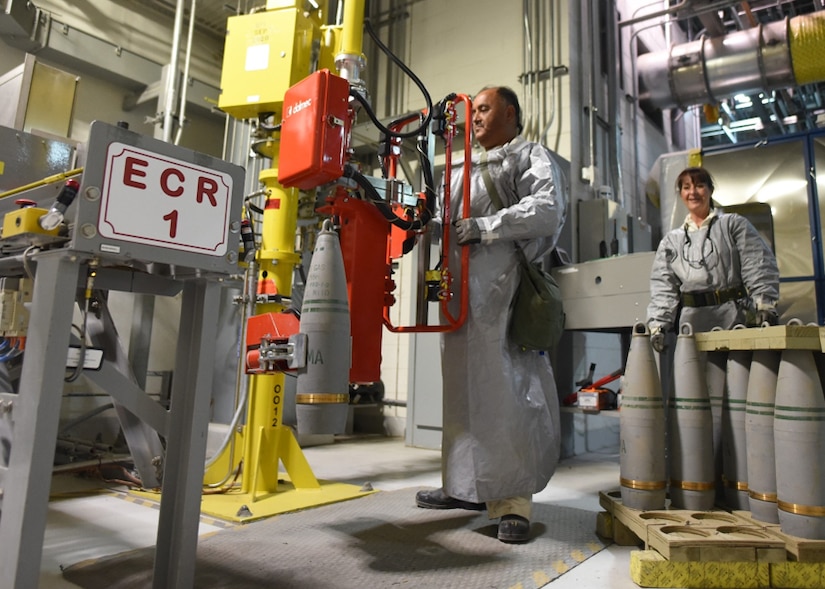
Mustard agent is a blister-producing chemical weapon contained within three types of munitions stored at the Pueblo Chemical Depot, each named after the diameter of its shell: 155mm projectile, 105mm projectile and 4.2-inch mortar round, he said.
This marks the end of the 155mm projectile campaign at PCAPP and the safe elimination of approximately two-thirds of the original chemical agent stored at the depot, said Levi. ''We proudly completed this campaign ahead of schedule — and while implementing strict, new protocols to keep our workforce safe amid the coronavirus pandemic,'' he said.
Since the late 1960s, the U.S. government has been taking steps to reduce and eliminate the U.S stockpile of chemical weapons. This was reinforced by a presidential directive and the U.S. ratification in 1997 of the Chemical Weapons Convention, an international treaty that calls on all member nations to destroy their chemical weapons and production facilities.
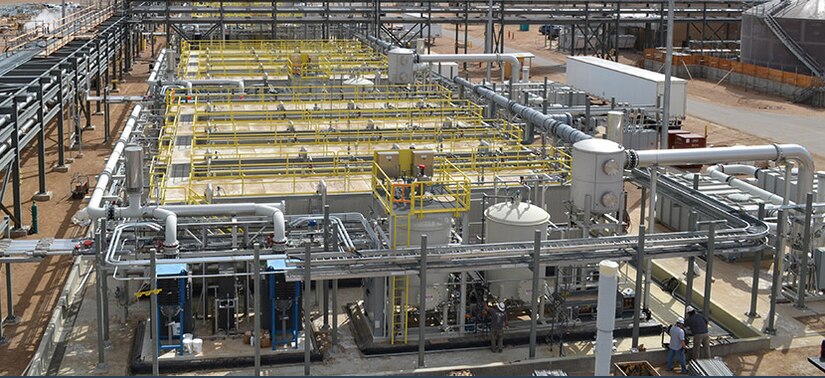
To comply with the treaty, the U.S. is destroying its last remaining chemical weapons stockpile, said Levi.
''Our ultimate goal is keeping the workforce and community safe from these World War II-era weapons,'' said Army Col. Michael Cobb, commander of the depot. ''We use the utmost care and follow strict safety procedures when delivering the munitions from their storage igloos to PCAPP.''
''Destruction of 155mm projectiles is a great accomplishment for the PCAPP team,'' said Ken Harrawood, project manager of the Bechtel Pueblo Team. ''Innovative solutions are key to solving issues that arise with a complex and one-of-a-kind operating facility like PCAPP. This would not have been possible without the dedication and professionalism of our amazing workforce.''
''I give credit to our team of employees dedicated to the munitions destruction effort, as many have spent their entire careers ridding the world of these weapons,'' said Kim Jackson, plant manager. ''We reached this milestone because of the amazing workforce and their diligence, hard work and support to the PCAPP mission.''
''The United States is fully committed to destroying 100% of its remaining chemical weapons stockpile by Dec. 31, 2023,'' said Mike Abaie, program executive officer of Assembled Chemical Weapons Alternatives.

As of Aug. 14, the destruction of 1,673.5 tons of mustard agent in the U.S. has been reported to the Organization for the Prohibition of Chemical Weapons, an intergovernmental organization whose goal is to eradicate chemical weapons worldwide, said Abaie.
Under the close supervision of trained operators, the pilot plant uses dozens of automated systems to disassemble and drain the munitions and thermally heat the drained munition bodies, said Levi.
The liquid agent is neutralized, and the product, hydrolysate, is then fed to living microorganisms in a process known as biotreatment, Levi explained. Water is recycled at the pilot plant and the remaining salt is shipped off-site to a permitted treatment, storage and disposal facility. The plant is equipped with a robust pollution abatement system made up of 12 carbon filter banks that filter out particles before air from inside the plant is released back into the atmosphere.
During the next several months at PCAPP, technicians will retrofit the plant’s robots and systems to begin processing the next munitions campaign, which are the 105mm projectiles, said Levi.
In July, workers finished assembling three static detonation chambers to augment PCAPP by destroying problematic munitions, which are unsuitable for processing using the main plant’s automated equipment, said Levi. The SDC units will destroy the 4.2-inch mortar rounds, which is the third and final destruction campaign.

The other remaining chemical weapons facility in the U.S. is PCAPP's sister site, the Blue Grass Chemical Agent-Destruction Pilot Plant near Richmond, Kentucky. BGCAPP is safely destroying 523 U.S. tons of the nerve agents VX and GB (sarin) and mustard agent stored in rockets and projectiles at the site, Levi said.
BGCAPP is using neutralization or an explosive destruction technology to safely destroy the munitions, he continued. BGCAPP began agent destruction operations with explosive destruction technology on June 7, 2019, and its main plant began operations on Jan. 17, 2020. Operations will be completed by Dec. 31, 2023.
An important element in the process of safely destroying chemical weapons is the coordination and collaboration with the local communities. The Chemical Stockpile Emergency Preparedness Program works closely and supports state and local governments and the Federal Emergency Management Agency to educate, prepare and protect communities surrounding the stockpile sites, Levi said.
When Army Spc. David Marable greets new soldiers arriving at Rhine Ordnance Barracks, the Columbus, Georgia-native thinks about how challenging a move to Germany must be amid COVID-19 restrictions.
Hundreds of unaccompanied soldiers spend roughly two weeks at Task Force Willkommen upon their arrival to Germany. Most are junior enlisted troops heading to their first assignment and have never been overseas before.
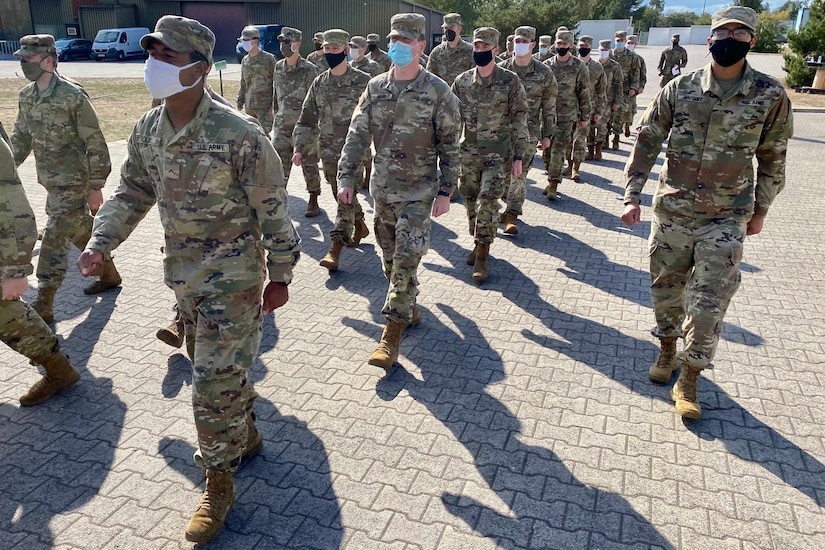
Marable is one of roughly 60 reserve soldiers from the 7th Mission Support Command, a U.S. Army Reserve unit headquartered at Kaiserslautern's Daenner Kaserne, who spent this summer caring for new arrivals during a 14-day lockdown, designed to reduce the spread of the virus.
"I try to be there for them as much as I can," Marable said, a human resources specialist with the 83rd Combat Sustainment Support Battalion. "If they need someone, they come and get me."
Like most reserve soldiers, Marable brings civilian skills to his job. When not in uniform, he is a personnel specialist in Baumholder. He's often used his connections, plus a deep knowledge of German culture and the local area, to help new soldiers adjust.
"If I see somebody who is struggling, I will tell them what I know and about the pitfalls I had to endure so they don't have to themselves," Marable said.
For two weeks, while transient soldiers are under restricted movement, large open warehouses are their home. They take online training, stay in shape with physical fitness sessions and hang out at the USO. They must march in groups to the dining facility — a large tent that is reminiscent of field conditions — and to the local convenience store. Other than that, they socialize with their masks on, play video games or cards or use free WiFi to call home.
"The cadre are treating us pretty good," Army Staff Sgt. Kendall Eason, who is starting his second tour in Germany, said. "The USO also supplies tons of stuff, and I didn't expect that, so it is a plus."
Soldiers are tested upon arrival. Ten days later, they undergo a follow-up test. Any soldiers who present symptoms or tests positive are brought to a separate facility and cared for by medical professionals. Trace teams contact anyone close to those soldiers. They are then separated and monitored.
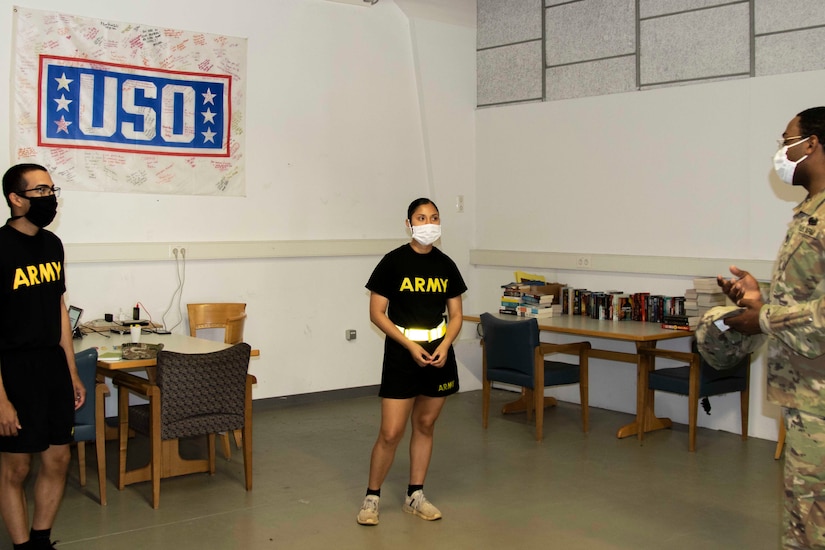
Soldiers with families, plus senior enlisted and officers, are housed in other locations at U.S. Army Garrison Rheinland-Pfalz, where their movement is also restricted. Measures to limit COVID-19 transmission are in accordance with German regulations and in some cases stricter than off-post. The local German press recently reported how impressed host nation officials were with the high standard of the U.S. military's COVID-19 restrictions.
Most soldiers arrive at nearby Ramstein Air Base then travel by bus to ROB. Awaiting for their initial COVID-19 test results is their first task.
"[For] the first three days, you are not cleared until you get your test results back," Eason said. "After you get your test results back, that is when you start classes, be able to do laundry and get marched to the shoppette."
Begun in March, as a cooperative effort between the 21st Theater Sustainment Command and USAG-RP, the task force has since cared for thousands of soldiers. In June, reserve soldiers from the 7th MSC stepped in. At the end of September, the 21st TSC's Special Troops Battalion will continue the mission.
"I thought we were going to be quarantined in our quarters at our unit," Army Sgt. Joshua Cueno, who is joining the 44th Expeditionary Signal Battalion in Baumholder, said. "I was a little unprepared for that. I know some of the other guys were too."
Cueno, a signal noncommissioned officer from San Diego who previously served in Iraq, said some transient soldiers arrived without some important personal items, including towels. Task Force staff and the USO stepped in.
"They had some extra supplies, so some of the guys were able to get toiletries and stuff like that," Cueno said.
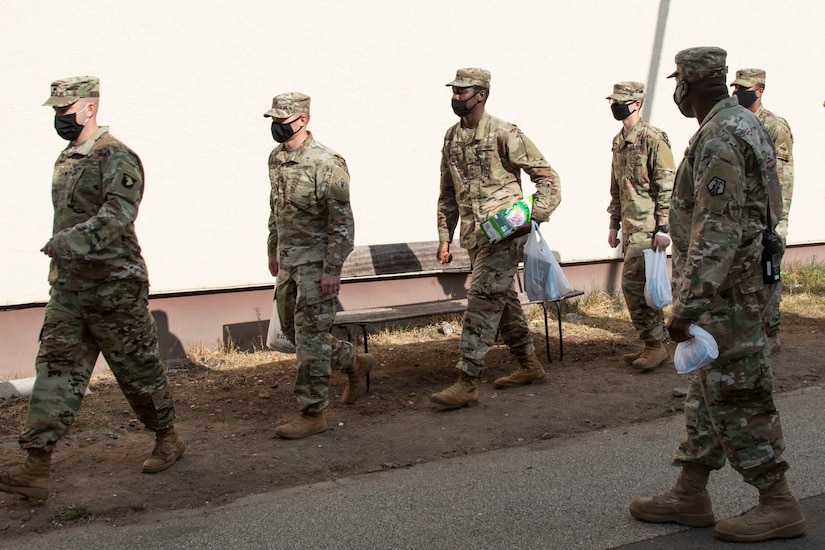
Protecting Defense Department personnel is a top priority, according to Defense Secretary Dr. Mark T. Esper. In U.S. Army Europe, unaccompanied soldiers heading into barracks could potentially spread COVID-19 and affect readiness. Therefore, it was important for the Army to build a program that cares for incoming soldiers and protects the force.
"People are the most important when it comes to combating this pandemic," Army Lt. Col. Andrea Talbert, 83rd CSSB commander, who has led TF-Willkommen since July, said. "It's our honor and our duty to care for incoming personnel while protecting the force and the people in our host nation."
More than 1,400 soldiers completed the two-week cycle since July. Afterward, they move to units across Germany, ready to support Army missions, Talbert said.
"We are very dedicated and proud to support our active duty counterparts," Talbert added. "By doing this here, receiving units can remain focused on their missions and not worry about COVID-19 in their formations."
(Army Staff Sgt. Christopher Jackson is assigned to the 7th Mission Support Command).